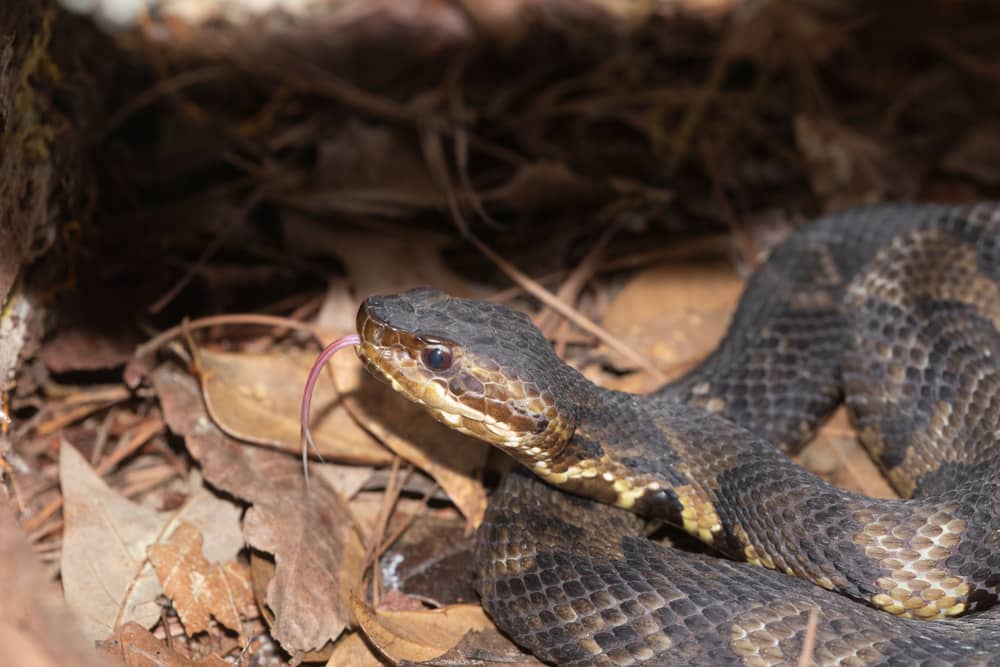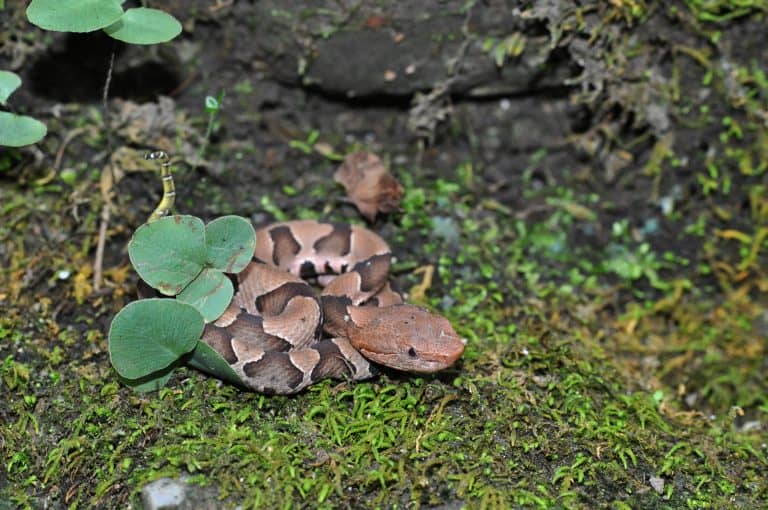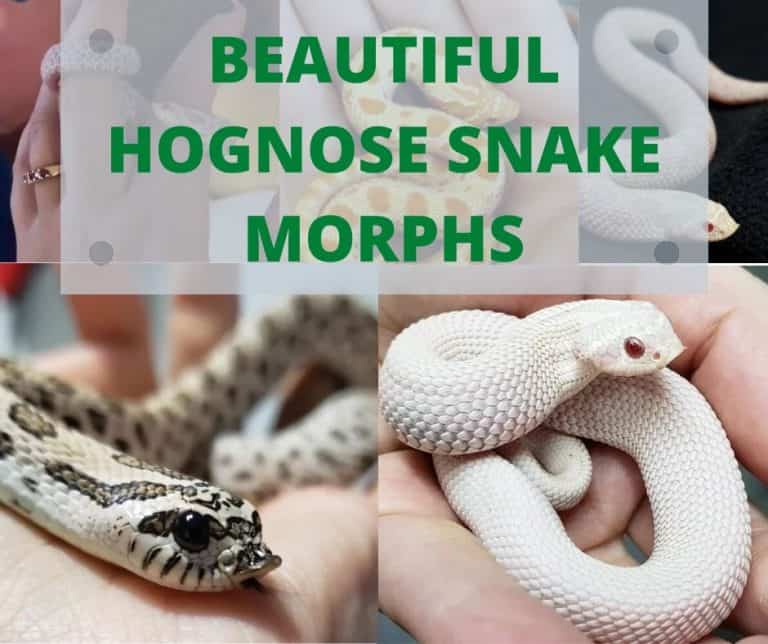What Is a Cottonmouth Snake?
The cottonmouth snake, also known as the water moccasin, is a venomous pit viper found primarily in the southeastern United States. Its name comes from the white, cotton-like interior of its mouth, which it flashes as a warning when threatened.
Where Are Cottonmouths Commonly Found?
These snakes thrive in wet, swampy environments — think marshes, ponds, rivers, and even drainage ditches. If there’s standing or slow-moving water, there’s a good chance a cottonmouth might be nearby.
General Characteristics of Cottonmouths
Behavior and Temperament
Despite their scary reputation, cottonmouths are not as aggressive as people think. They usually rely on camouflage or fleeing before striking. However, when cornered, they’re known to stand their ground and put on quite a show — mouth wide open, fangs bared.
Adult vs. Juvenile Traits
Adults are dark, often nearly black, and thicker-bodied. Juveniles, on the other hand, have vibrant patterns and unique characteristics that make them easier to identify — if you know what to look for.
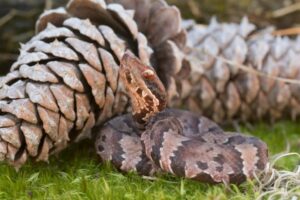
Why Baby Cottonmouth Identification Matters
Safety Concerns
Misidentifying a venomous baby snake can have serious consequences, especially for kids or pets who might stumble across one unknowingly. Knowing what you’re looking at could prevent a trip to the ER.
Common Misidentifications
Baby cottonmouths are often mistaken for harmless water snakes or baby copperheads. A wrong ID could lead to either unnecessary panic or dangerous indifference.
Key Physical Traits of a Baby Cottonmouth
Body Pattern and Color
Baby cottonmouths are born with striking reddish-brown or tan bodies with bold crossband patterns. These patterns are more vivid than in adults, giving them a distinctly banded appearance.
Head Shape and Eyes
Their heads are triangular, much broader than the neck — a classic pit viper trait. Look at the eyes: vertical, cat-like pupils signal a venomous snake, while harmless snakes usually have round pupils.
Tail Tip Coloration
Here’s a dead giveaway: baby cottonmouths have a bright yellow or greenish tail tip. They use it like a fishing lure to attract prey like frogs or lizards. If you spot a baby snake wiggling a neon tail — stay back.
Size at Birth
Newborns are typically 8 to 14 inches long, with a relatively thick body for their length. Don’t let their small size fool you — their venom is fully potent from day one.
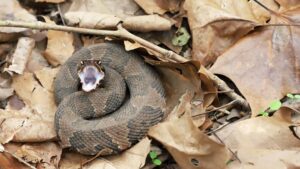
Behavioral Traits of Baby Cottonmouths
Defensive Behavior
Juveniles will often coil, open their mouths, and hold their ground when threatened. They may also vibrate their tails, creating a rattlesnake-like sound if they’re on dry leaves or debris.
Threat Displays
That gaping white mouth? That’s the signature cottonmouth warning. Baby or adult — they’ll show it when they feel cornered.
Habitat and Where You Might Encounter One
Preferred Environments
Baby cottonmouths stick close to water sources. Expect to find them near slow streams, wetlands, lakesides, or even flooded fields. Fallen logs, thick brush, or shoreline rocks are prime hiding spots.
Times of Activity
They are primarily active at night during warm months but can be seen during the day in spring or fall. Early morning and dusk are peak times, especially after rain.
Common Look-Alikes and How to Tell Them Apart
Baby Water Snakes
Water snakes are non-venomous but share similar markings. However, their heads are more rounded, and they lack that neon tail tip. Also, their pupils are round — a key feature.
Copperheads vs. Cottonmouths
Copperhead babies also have a yellow tail tip. But copperheads tend to have hourglass-shaped markings and a more coppery hue. They also prefer drier habitats.
Harmless Colubrids
Many harmless snakes mimic cottonmouths in color, but lack the thick body, triangular head, and vertical pupils. Still, when in doubt — don’t touch.
What to Do If You See One
Safety First
Don’t approach. Don’t try to kill it. Back away slowly and give the snake space. Most bites occur when people try to handle or kill snakes.
Who to Contact
Call animal control or a local wildlife rescue if you find one in your home, garage, or yard. Let the pros handle relocation.
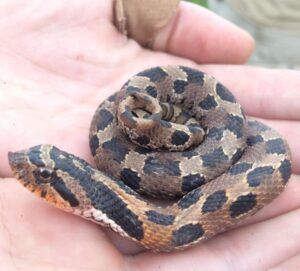
Myths vs. Facts About Cottonmouths
Are They Aggressive?
Not really. They’re defensive. If you give them space, they’ll usually retreat. That mouth gape is a bluff — not a battle cry.
Can They Chase People?
Nope. This is a persistent myth. They might slither in your direction if escaping to water, but they aren’t out to get you.
Importance of Snake Conservation
Role in the Ecosystem
Cottonmouths control rodent and amphibian populations. They’re vital to maintaining balance in wetland ecosystems.
Why Not to Kill Them
They don’t seek conflict, and killing them disrupts the natural environment. Plus, it’s often illegal to kill native wildlife.
Tools and Resources for Identification
Field Guides
Invest in a good regional reptile field guide. It’s a must-have for hikers, campers, or backyard nature lovers.
Apps and Online Databases
Use apps like iNaturalist or HerpMapper to report sightings and compare photos. Crowdsourced data helps track species populations and prevent bites.
Conclusion
Spotting a baby cottonmouth can be alarming, but knowing how to identify one can turn fear into awareness. Look for the bright tail tip, the banded pattern, the cat-like pupils, and the triangular head. Respect them, give them space, and always prioritize safety — both theirs and yours. Nature isn’t out to get you, but it does appreciate a little understanding.
FAQs
What’s the difference between a cottonmouth and a water snake?
Cottonmouths are venomous with cat-like eyes and thick bodies. Water snakes are non-venomous, usually thinner, and have round pupils.
